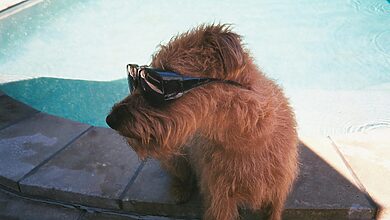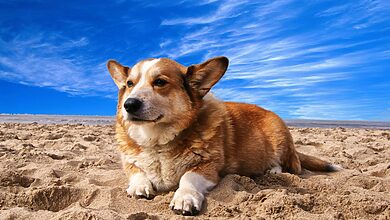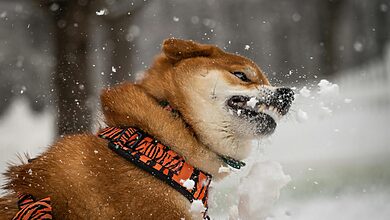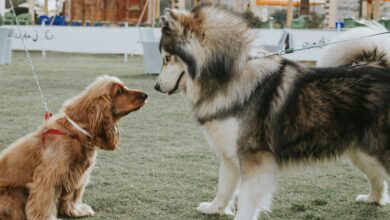Understanding and Addressing Resource Guarding in Dogs

Our four-legged friends bring boundless joy to our lives, but they may sometimes exhibit behaviors that require our understanding and guidance. One such behavior is resource guarding—a natural instinct where dogs protect possessions they deem valuable. In this comprehensive guide, we’ll explore resource guarding in dogs, unraveling its various types, pinpointing telltale signs, and delving into strategies for addressing and preventing this behavior. Whether you have an energetic German Shepherd, an affectionate Labrador Retriever, or any other breed, these insights will help you foster trust, respect, and a harmonious relationship with your furry companion.
Unpacking Resource Guarding
What is Resource Guarding?
Resource guarding is an instinctual behavior where a dog displays protective or aggressive tendencies over items they perceive as valuable. These prized possessions can range from food and toys to specific resting spots or areas within your home.
Types of Resource Guarding
Resource guarding manifests in various forms, each with distinct characteristics:
- Food Guarding: This is the most common type, where a dog becomes defensive around their food or food bowl, often growling or snapping when approached.
- Toy Guarding: Dogs may guard their toys, showing possessiveness by growling or snapping if someone encroaches on their playthings.
- Bed or Space Guarding: Some dogs exhibit territorial behavior over their resting spots or particular areas in your home, asserting dominance through stiff body language or vocalizations.
Signs of Resource Guarding
To effectively address resource guarding, you must recognize the telltale signs:
- Growling: Dogs frequently emit a low growl as a warning signal when someone approaches a guarded resource.
- Snapping or Biting: In more extreme cases, a dog may escalate to snapping or biting to protect their resource.
- Stiff Body Language: Tense body language, including stiffening, baring teeth, or assuming a rigid posture, can signal resource guarding behavior.
How to Stop Resource Guarding in Dogs
Understanding the Underlying Causes
To address resource guarding effectively, you must consider the root causes:
- Fear: Some dogs guard resources out of fear that they might lose them. This fear may stem from past experiences or a general sense of insecurity.
- Anxiety: Anxiety can be a catalyst for resource guarding, particularly in new or stressful situations where your dog feels vulnerable.
- Possessiveness: Certain dogs possess a natural predisposition toward possessiveness, feeling the need to protect what they perceive as their belongings.
Resource Guarding Training
Training plays a pivotal role in addressing resource guarding and should be approached thoughtfully:
- Counterconditioning: This technique involves teaching your dog that when people approach their resources, it results in positive outcomes, such as receiving treats or rewards.
- Desensitization: Gradual exposure to the triggering situation (someone approaching the resource) is employed, rewarding calm behavior at each step.
- Seeking Professional Help: In cases where resource guarding is severe or poses a risk, consulting a professional dog trainer or behaviorist is highly advisable.
Resource Guarding Prevention
Start Early with Puppies
Preventing resource guarding is often more straightforward than addressing it later:
- Handling Exercises: Regularly handle your puppy’s food bowl, toys, and belongings from a young age. This promotes comfort with human interaction and reduces the likelihood of guarding behaviors.
- Share and Trade: Encourage your puppy to share their resources with you, rewarding them when they willingly relinquish items. This fosters a positive association with sharing.
- Puppy Classes: Enrolling in puppy socialization and training classes is an excellent way to instill good behavior habits early in life.
Consistency is Key
Maintaining consistency in your interactions with your dog is paramount:
- Establish Routine: Set clear routines for feeding, playtime, and rest. Predictability provides a sense of security for your dog.
- Practice Commands: Teach commands like “drop it” or “leave it,” which can be invaluable for managing situations where resource guarding may arise.
Tailored Solutions for Specific Scenarios
Resource Guarding in Multi-Dog Households
Resource guarding can become more complex in households with multiple dogs:
- Separate Resources: Provide separate feeding areas, toys, and resting spots for each dog. This minimizes the chances of conflict over resources.
- Supervision: Always monitor interactions closely, especially during meal times or when high-value items are involved.
Children Interaction with dogs
Managing interactions between dogs and children requires special attention:
- Education: Educate children on how to interact with dogs safely and teach them to respect a dog’s space and possessions.
- Adult Supervision: Never leave dogs and young children unattended. Adult supervision ensures safety for both children and dogs.
Resource Guarding in Specific Breeds
Resource Guarding in German Shepherds
German Shepherds, known for their loyalty and protective instincts, may display resource guarding behaviors. Early socialization and training are crucial to address and manage these tendencies.
Resource Guarding in Labrador Retrievers
While Labrador Retrievers are generally known for their friendly nature, individual dogs may exhibit resource guarding behavior. Training techniques can be employed to effectively address and modify this behavior.
Resource Guarding in Golden Retrievers
Golden Retrievers are renowned for their gentle disposition, but resource guarding can still manifest. Employ training methods to address and manage this behavior effectively.
Resource Guarding Products
Resource Guarding Training Aids
Explore various training aids and tools designed to facilitate the training process, making it more effective and efficient.
Resource Guarding Muzzles
Muzzles can be temporarily employed for safety during training sessions, ensuring that interactions are controlled and secure.
Resource Guarding Fences
Consider utilizing designated spaces or physical barriers within your home to manage resources and prevent conflicts among dogs.
Resource Guarding in Dogs
Understanding and addressing resource guarding is essential for building a trusting and respectful relationship with your dog. By identifying the signs, delving into the underlying causes, and implementing effective training and prevention strategies, you can ensure a safe and harmonious coexistence with your four-legged companion. Remember, every dog is unique, and patience, consistency, and positive reinforcement are the keys to success in managing resource guarding behavior.
If you encounter challenges with resource guarding or require personalized guidance, do not hesitate to seek assistance from a professional dog trainer or behaviorist. Your dedication to your dog’s well-being and your commitment to fostering a loving bond will undoubtedly lead to a happier and healthier life together.








